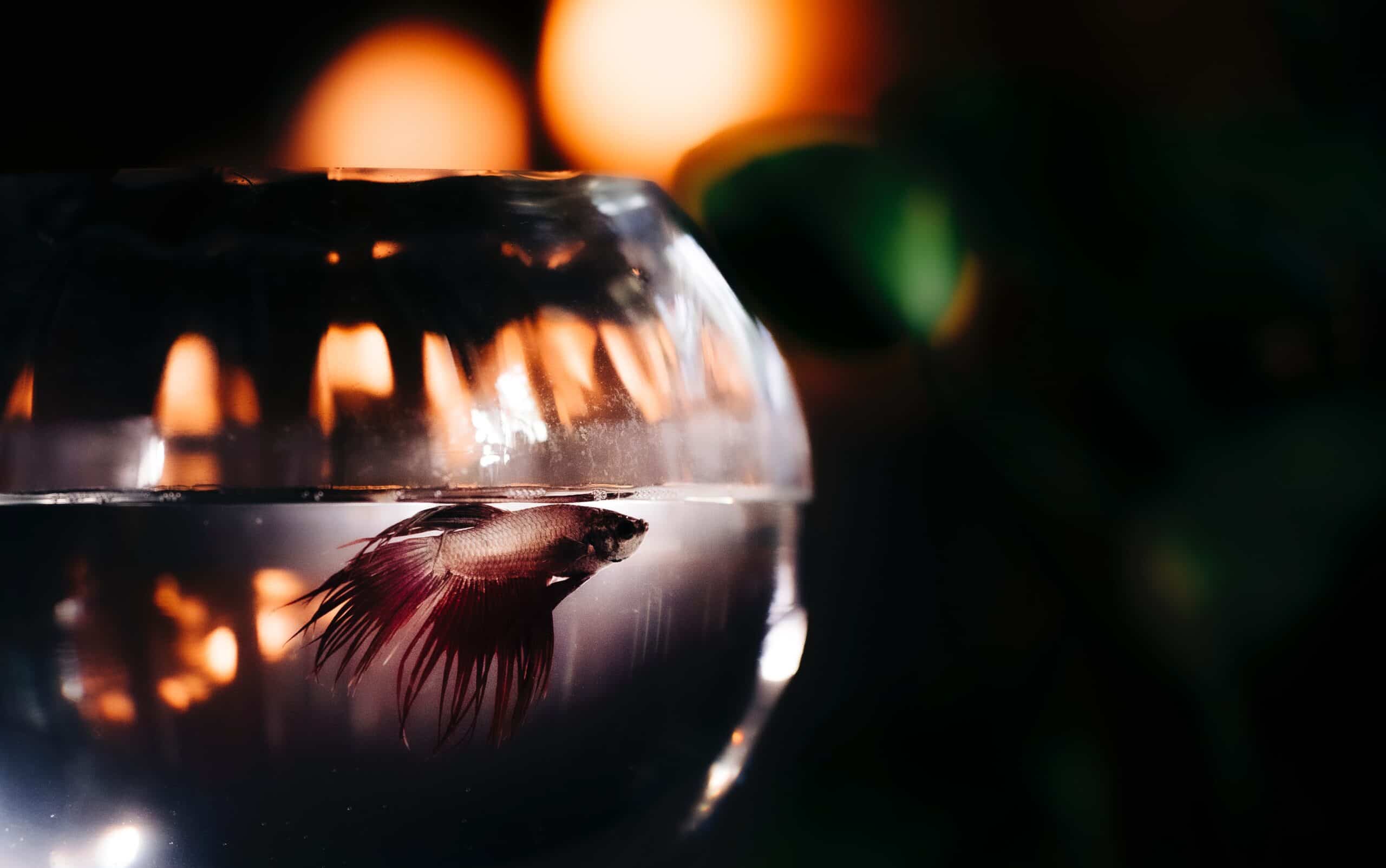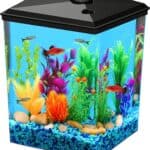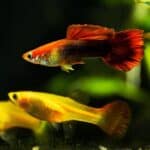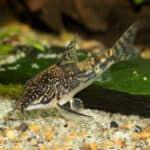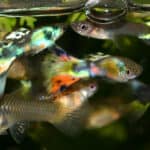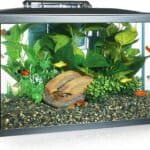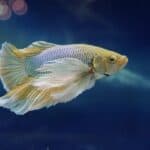A 3-gallon tank is a great size for a beginner fishkeeper. It is important to choose the right fish for your tank, or else you will end up with a premature dead fish.
In this article, I’ll look at some of the most popular fish for a 3-gallon tank. I’ll also provide care tips to help you keep your fish healthy and happy.
7 best fish for a 3-gallon tank.
#1. Guppies
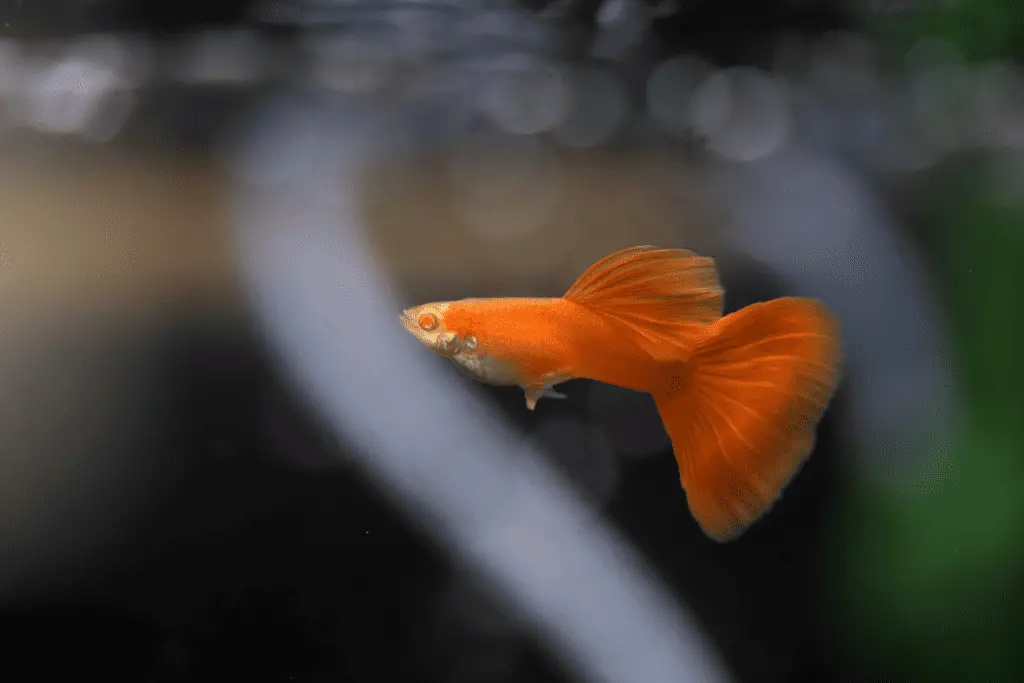
- Size: 2.4 inches’ max
- Difficulty: Beginner
- Number of Fish in a 3-Gallon Tank: 1
Guppies are a great option for your 3-gallon tank. They’re small, colorful, and relatively easy to care for. Plus, they’re fun to watch as they swim around and explore their new home. They’re easy to care for and can thrive in a wide range of conditions.
Here are a few tips about keeping Guppies in your aquarium:
- Guppies are tropical fish, so they need water that is between 72 and 82 degrees Fahrenheit.
- They also prefer a slightly acidic environment, with a pH between 6.5 and 7.5.
- Guppies are relatively easy to feed and will accept a wide variety of dry, frozen, and live foods.
- To keep your guppies healthy, it’s important to perform regular water changes and maintain good filtration in your fish tank.
#2. Ember Tetras
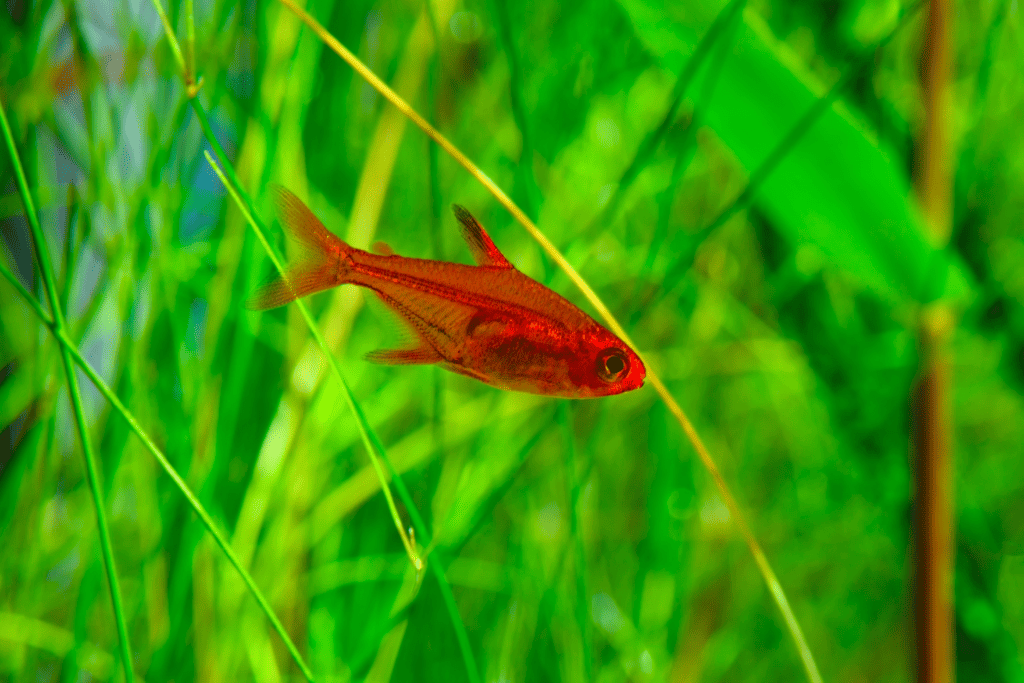
- Size: 0.8 inches
- Difficulty: Beginner
- Number of Fish in a 3-Gallon Tank: 2 to 3
Another popular fish option for a 3-gallon tank is the Ember Tetra (Hyphessobrycon amandae). These small, noticeable orange fish are peaceful and relatively easy to care for, making them a great choice for beginner aquarium hobbyists.
Ember tetras are native to the rivers of South America and prefer water that is slightly acidic with a temperature range of 72-82 degrees Fahrenheit. In the wild, these fish typically eat small insects and larvae, so a diet of high-quality flakes or pellets will suffice in captivity.
These lively little fish do well in groups and make a beautiful addition to any aquarium. When choosing tank mates for ember tetras, it is important to select peaceful species that are similar in size.
#3. Endler’s Livebearers
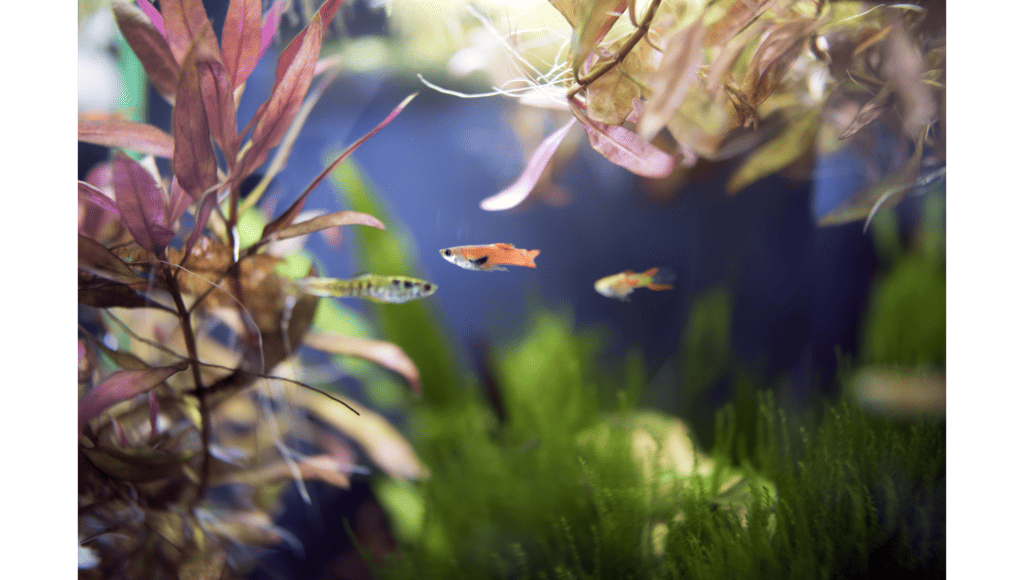
- Size: 1.8 inches
- Difficulty: Beginner
- Number of Fish in a 3-Gallon Tank: 1
Endler’s livebearers are a great eye-catching addition to any 3-gallon tank. They are small, peaceful fish that are easy to care for. These Guppy cousins are also great for beginners.
Livebearers are native to South America, and their natural habitat is brackish water. However, they can adapt to freshwater quite easily. They do best in tanks with plenty of hiding places and lots of plants.
Endler’s livebearers are not picky eaters and will accept most types of food. However, they do require a higher quality diet than some other fish. They should be fed a variety of foods, including flakes, pellets, and frozen foods.
#4. Bettas
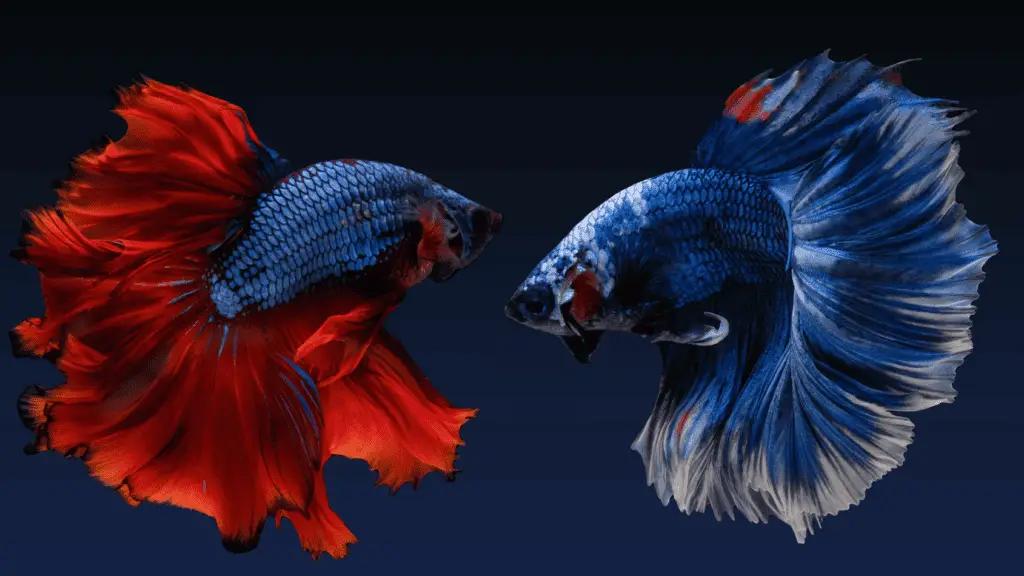
- Size: 3 inches
- Difficulty: Beginner
- Number of Fish in a 3-Gallon Tank: 1
Betta fish, also known as Siamese fighting fish, is a popular choice for aquariums. In fact, Bettas are among the most popular freshwater fish. They come in a variety of colors and patterns. Bettas are relatively easy to care for, but there are a few things to keep in mind when choosing them as pets.
A 3-gallon tank is the minimum size recommended for these fish. In such a small space, it’s best to stick with one betta. Any more than that and the fish will likely become stressed and start fighting.
As for diet, bettas are carnivores and need a protein-rich diet. Pellets formulated specifically for bettas are the best option, but they can also be fed frozen or live foods such as brine shrimp or bloodworms.
#5. Neon Tetras
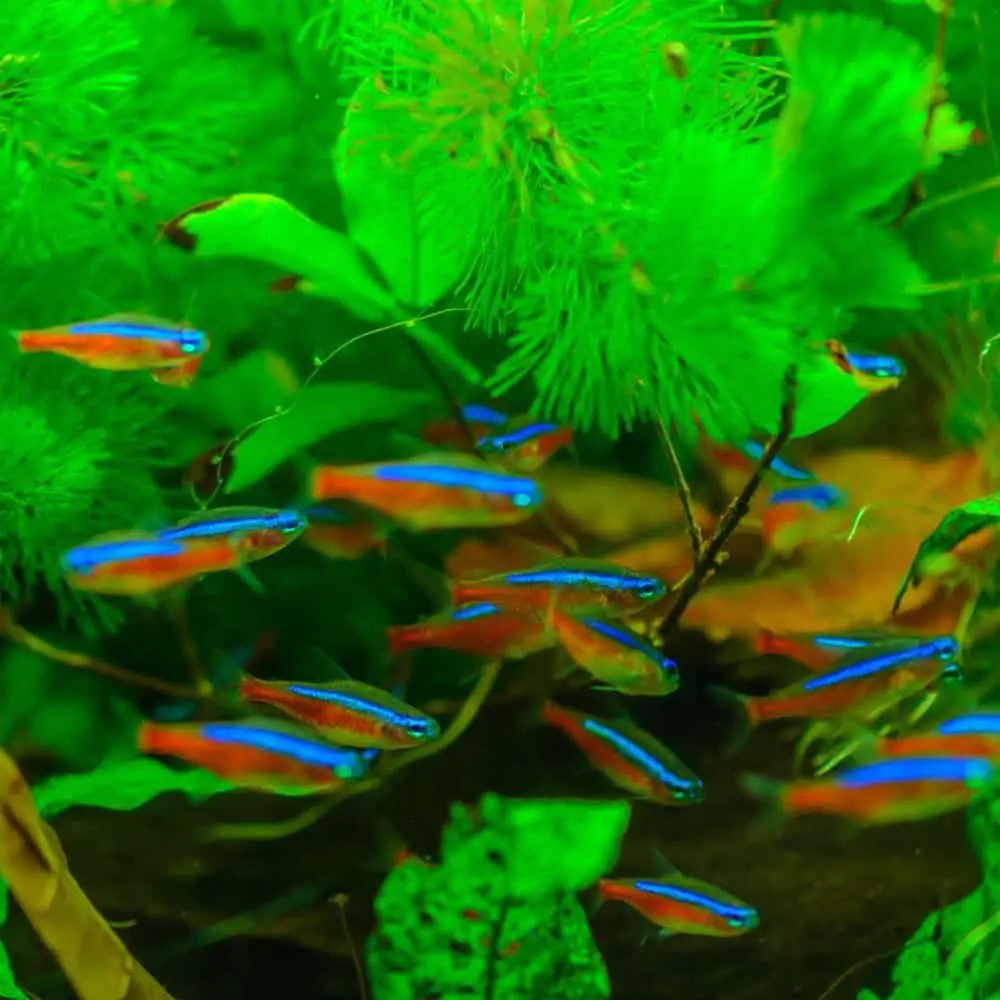
- Size: 1.5 inches
- Difficulty: Beginner
- Number of Fish in a 3-Gallon Tank: 2
If you’re looking for a low-maintenance fish to add to your 3-gallon tank, neon tetras are a great option. These little freshwater fish are known for their vibrant colors and peaceful demeanor. Neon tetras are relatively easy to care for, and they don’t require a lot of space, making them a perfect choice for smaller tanks.
There are a few things to keep in mind when keeping neon tetras in a small tank:
- First, it is important to maintain good water quality. This means regular water changes and using a filter. Smaller tanks tend to have more issues with water quality so it is important to be vigilant.
- Second, don’t overstock the tank. Neon tetras do best in groups but putting too many fish in a small tank can lead to problems such as poor water quality and aggression between fish.
- Third, provide hiding places for the fish. Neon tetras like to have places to hide and feel safe. Aquarium plants or cave-like decorations are both good options.
#6. Least Killifish
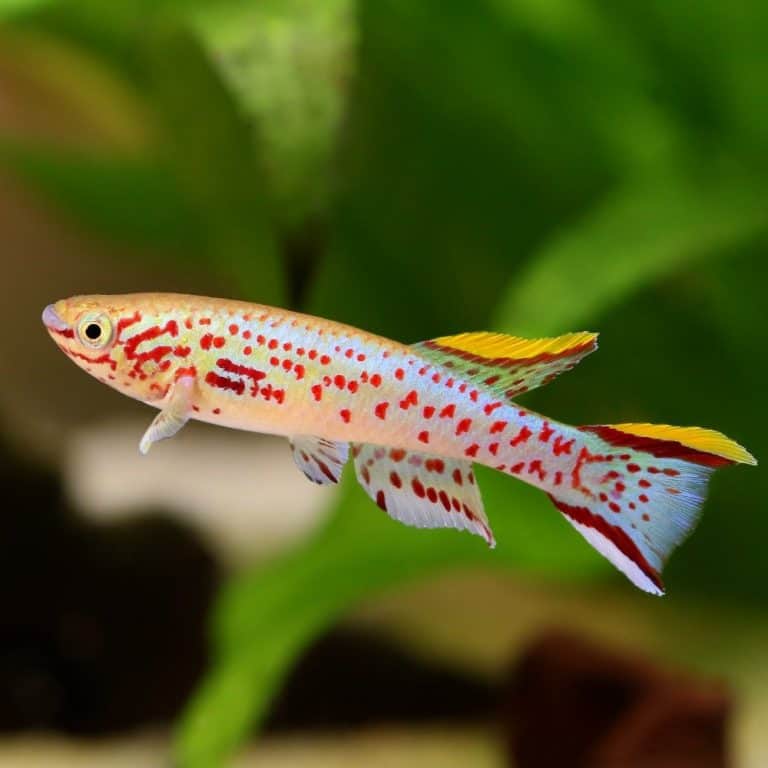
- Size: 1.4 inches
- Difficulty: Intermediate
- Number of Fish in a 3-Gallon Tank: 2
The least killifish is a peaceful and hardy fish that can be a great addition to any aquarium. They are very small, only reaching about 1.4 inches in length, and are usually olive green in color. They are omnivorous and will do well on a diet of flake food, live food, and frozen food.
Care for the least killifish is relatively easy. They prefer tanks with plenty of hiding places and lots of plants. A 3-gallon tank is big enough for 2-3 Least Killifish. These fish are not known to be fin nippers, but they may eat very small fish or shrimp.
#7. Zebra Danios
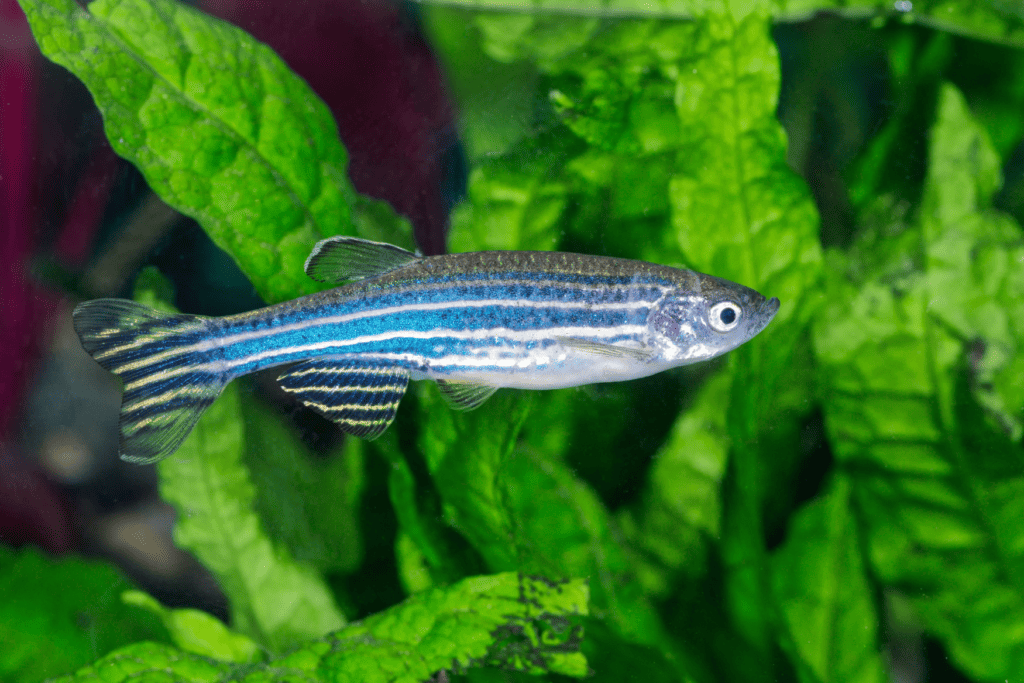
- Size: 1.5 inches
- Difficulty: Beginner
- Number of Fish in a 3-Gallon Tank: 2
A zebra danio is a freshwater fish that is native to South Asia. It is a popular aquarium fish because of its vibrant color and active nature. A 3-gallon tank is a good size for keeping 2 zebrafish.
Zebra danios are omnivorous, so their diet should consist of both plant and animal matter. In the wild, they eat small insects, crustaceans, and plankton. In captivity, they can be fed a variety of live, frozen, or freeze-dried foods as well as pellets or flakes designed for small carnivorous fish. Zebrafish are relatively easy to care for and are tolerant of a wide range of water conditions. They prefer water that is slightly acidic to neutral with a temperature between 68-86 degrees Fahrenheit.
Introduction to small tanks
A 3-gallon tank is an excellent choice for aquarists who are short on space or looking for a low-maintenance setup. These small tanks can be a great option for beginners or those who want to add a touch of aquatic life to their home or office. While small tanks are easier to maintain and more affordable than larger ones, they also present unique challenges due to their limited water volume. This makes it crucial to carefully select the fish species, equipment, and maintenance practices to ensure a healthy and thriving environment for your aquatic pets.
Tank setup and maintenance
Proper tank setup and maintenance are crucial for the well-being of your fish in a 3-gallon tank. Here are some essential elements to consider:
- Substrate: Choose a substrate that suits the preferences and needs of your chosen fish species. Sand or fine gravel is suitable for most species. Ensure that the substrate is clean and free of sharp edges that may harm your fish.
- Decorations: Provide hiding spots and resting areas for your fish using decorations like rocks, driftwood, or small caves. Ensure that the decorations are aquarium-safe and do not leach harmful chemicals into the water.
- Filtration: A small, efficient filter is essential to maintain water quality in a 3-gallon tank. Look for a filter that is designed for small tanks, offers adjustable flow, and has biological, mechanical, and chemical filtration capabilities.
- Lighting: A moderate level of lighting is generally sufficient for a small tank, especially if you have live plants. Ensure that the light spectrum is suitable for the fish and plants you choose. Keep a consistent light cycle, ideally around 8-10 hours of light per day, to prevent stress and promote a healthy day-night rhythm for your fish.
- Temperature and heater: Depending on the fish species, you may need a small, adjustable heater to maintain a stable water temperature. Place the heater close to the filter to ensure even heat distribution.
- Water quality: Regularly monitor water parameters such as ammonia, nitrite, nitrate, pH, and temperature. Perform partial water changes (20-30%) at least once a week to maintain optimal water quality.
Compatibility and stocking
Selecting compatible fish species is crucial for maintaining a peaceful and stress-free environment in a 3-gallon tank. When choosing fish, consider the following factors:
- Temperament: Select species that have similar temperaments to avoid aggression or territorial disputes. For example, avoid mixing aggressive or territorial fish with shy, peaceful species.
- Size: Choose fish species that remain relatively small even when fully grown. Larger fish may become stressed or unhealthy in the confined space of a 3-gallon tank.
- Dietary requirements: Ensure that the fish species you select have compatible diets, so that feeding is straightforward and no fish are left hungry or malnourished.
- Stocking density: Avoid overstocking your tank, as this can lead to stress, poor water quality, and disease outbreaks. A general rule of thumb is to allow 1 gallon of water per inch of adult fish. However, this rule may vary depending on the specific needs and bioload of the fish species.
By considering these factors, you will be able to create a harmonious and healthy environment for your fish in a 3-gallon tank.
Feeding
Providing a balanced and appropriate diet for your fish is essential to ensure their health and well-being. Here are some guidelines for feeding fish in a 3-gallon tank:
- Types of food: Each fish species has its own dietary preferences and nutritional requirements. Research the specific needs of your chosen species and provide a variety of high-quality commercial fish foods, such as flakes, pellets, or frozen and live foods, to meet these needs.
- Feeding frequency: Most small fish species should be fed once or twice a day. However, the feeding frequency may vary depending on the specific requirements of each species. Be sure to research and follow the recommended feeding schedule for your fish.
- Portion sizes: Overfeeding can lead to poor water quality and health issues for your fish. Offer small portions of food that your fish can consume within a few minutes. Remove any uneaten food promptly to prevent water pollution.
Monitoring fish health
Observing your fish daily and understanding their normal behavior is crucial for identifying signs of illness, stress, or injury. Here are some indicators of potential health issues:
- Unusual behavior: Lethargy, erratic swimming, loss of appetite, or hiding for extended periods may indicate stress or illness.
- Physical signs: Watch for physical symptoms such as clamped fins, bloating, discolored patches, or spots on the body, as these can suggest infection, disease, or injury.
- Breathing issues: Rapid or labored breathing can signal poor water quality, stress, or disease.
If you notice any of these signs, take prompt action to identify and address the underlying issue. Consult a veterinarian or an aquarium expert if necessary, and be prepared to administer appropriate treatments, such as medication or water changes.
Breeding
Breeding fish in a 3-gallon tank can be challenging due to space limitations, but some species may still reproduce under the right conditions. If you’re interested in breeding your fish, follow these guidelines:
- Research breeding habits: Learn about the specific breeding requirements of your chosen fish species, such as water temperature, pH, or the presence of specific plants or hiding spots.
- Signs of mating behavior: Observe your fish for signs of mating behavior, such as increased activity, color changes, or specific courtship rituals.
- Separate breeding pairs: If possible, set up a separate breeding tank to provide a controlled environment for mating and raising fry. This will help ensure their survival and minimize stress on the adult fish.
- Care for fry: Once the fry have hatched, provide them with appropriate food and care to ensure their growth and survival. Newly hatched brine shrimp (Artemia nauplii) are a popular choice for feeding fry, as they are small and highly nutritious.
By following these guidelines, you may be able to successfully breed your fish in a small tank. However, it’s essential to consider the space limitations and the additional care required when breeding fish in a 3-gallon tank.
Plants and aquascaping
Incorporating live plants and thoughtful aquascaping can greatly enhance the aesthetic appeal of your 3-gallon tank while also providing numerous benefits for your fish. Here are some recommendations:
- Suitable live plants: Choose plants that are compatible with the size of your tank and the needs of your fish. Some small-tank-friendly plants include Anubias, Java Moss, Java Fern, and Cryptocoryne species. These plants are generally easy to care for and provide hiding spots, resting areas, and even breeding grounds for your fish.
- Benefits of live plants: Live plants not only enhance the visual appeal of your tank but also help maintain water quality by absorbing nitrates and producing oxygen. They can also provide natural filtration, reduce algae growth, and create a more stable environment for your fish.
- Aquascaping: Arrange plants, rocks, and driftwood in a visually pleasing and functional manner, taking into consideration the swimming and hiding preferences of your fish species. Be mindful not to overcrowd the tank, as your fish need open swimming space to thrive.
- Maintenance: Regularly trim and prune your plants to prevent overgrowth and maintain a balanced, healthy environment for your fish. Remove any dead or decaying plant matter to keep your tank clean.
Tips for Success
To ensure a thriving 3-gallon tank, follow these best practices:
- Regular water changes: Perform partial water changes (20-30%) at least once a week to maintain optimal water quality and remove excess waste and toxins.
- Testing water parameters: Regularly test water parameters, such as ammonia, nitrite, nitrate, and pH, to ensure a stable and healthy environment for your fish. Make necessary adjustments to keep these parameters within the acceptable range for your chosen species.
- Observe fish behavior: Monitor your fish daily to identify any changes in behavior, appetite, or appearance that may indicate stress, illness, or injury. Address any issues promptly to prevent complications.
- Quarantine new fish: Before adding new fish to your tank, quarantine them for at least two weeks in a separate tank to ensure they are healthy and free of diseases or parasites that could affect your existing fish population.
- Avoid overstocking: Resist the temptation to add too many fish to your small tank. Overstocking can lead to stress, poor water quality, and increased risk of disease.
By following these tips and providing appropriate care, you can enjoy a successful and fulfilling experience with your 3-gallon fish tank.
FAQ
To help address common questions and concerns about maintaining a 3-gallon fish tank, we’ve compiled this FAQ section:
- Q: Can I keep more than one fish species in a 3-gallon tank?
A: Yes, you can keep more than one fish species in a 3-gallon tank, as long as they are compatible in terms of temperament, size, and dietary requirements. Be cautious not to overstock the tank, as this can lead to stress and poor water quality. - Q: How often should I clean my 3-gallon tank?
A: Perform partial water changes (20-30%) at least once a week to maintain optimal water quality. Regularly clean the tank’s interior surfaces, filter, and decorations to remove algae and debris. Thoroughly clean the substrate as needed to remove accumulated waste. - Q: Can I keep invertebrates in my 3-gallon tank?
A: Some small invertebrates, such as snails and shrimp, can be kept in a 3-gallon tank alongside compatible fish species. Be sure to research the specific requirements and compatibility of the invertebrates you wish to add. - Q: How do I cycle a 3-gallon tank?
A: To cycle a 3-gallon tank, set up the tank with substrate, decorations, filter, and heater (if needed) and allow it to run for several weeks without fish. Regularly test the water for ammonia, nitrite, and nitrate levels. Once ammonia and nitrite levels drop to 0 ppm and nitrates are present, the tank is considered cycled and ready for fish. - Q: Can I use tap water in my 3-gallon tank?A: Tap water can be used in your tank, but it’s essential to treat it with a water conditioner to neutralize harmful chlorine and chloramines. Additionally, test the water parameters and adjust them as necessary to match the requirements of your chosen fish species.
- Q: Do I need an air pump in my 3-gallon tank?A: An air pump is not always necessary, especially if your filter provides adequate water movement and surface agitation for oxygen exchange. However, an air pump can be beneficial for fish species that prefer well-oxygenated water or if you experience issues with low oxygen levels.
- Q: What is the most playful fish for a small tank?A: One of the most playful and active fish suitable for small tanks is the guppy. Guppies are known for their lively behavior and adaptability to various tank conditions. They are social fish and thrive in small groups, making them a great option for adding personality and movement to a 3-gallon tank. However, ensure that the tank is not overcrowded and that any tank mates are compatible with guppies in terms of temperament and size.
- Q: How many fish can be kept in a 3-gallon tank?A: The number of fish that can be kept in a 3-gallon tank depends on the specific needs and bioload of the fish species. A general rule of thumb is to allow 1 gallon of water per inch of adult fish. However, this rule may vary depending on the fish species and their compatibility. In a 3-gallon tank, it’s crucial not to overstock the tank to avoid stress, territorial issues, and poor water quality. Typically, you can keep a few small fish, such as 3-4 guppies or a single betta, but always research the specific needs of your chosen species before determining the appropriate stocking levels.
By addressing these frequently asked questions, we hope to provide helpful guidance and support for maintaining a healthy and thriving 3-gallon fish tank.
